Updated April 18, 2022
It was a recurring question about my trip Down Under. “What were the highlights?” The answer was easy. Cycling Uluru/Ayers Rock was consistently in my top three.
Table of Contents
What is Uluru?
Officially known as Uluru/Ayers Rock, it is a massive monolith rising out of the desert of Central Australia. It’s huge — 9.4 kilometres (5.8 miles) around the base. At a height of 348 metres (1141 feet), it’s taller than the Eiffel Tower in Paris or the Empire State Building in New York. Uluru is like an iceberg in the desert, with an estimated 2.5 kilometres (1.5 miles) of its bulk underground.
Uluru and nearby Kata Tjuta (or Olgas) are a part of the Uluru-Kata Tjuta National Park.
The Aṉangu, the traditional custodians of Uluru own the land, which has been leased to the Australian government for 99 years. The Aṉangu and Parks Australia jointly manage the national park. This arrangement came into being in 1985 in an historic moment known as Handback.
A sacred place
My first meaningful connection with Uluru was at sunrise. I was at the southeast side at the Talinguru Nyakunytjaku lookout. Being this close was an altogether different experience from seeing it from a distance. The cloud cover suggested we wouldn’t be treated to the fiery red glow often seen in photographs.
That was indeed the case. But I wasn’t disappointed. Just being in the presence of Uluru was enough. It’s hard to describe.
Cycling Uluru
1. The bike path
Not long after 7:00 am, we were at the Outback Cycling mobile shop beside the Uluru-Kata Tjuta Cultural Centre to pick up our bikes from Lehi.
It was February, at the height of the Australian summer. We figured an early morning departure would position us ahead of the 40-degree Celsius temperatures predicted for later in the day.
As mentioned, Uluru has a circumference of 9.4 kilometres. The bike path is approximately 15 kilometres. The trail is flat, apart from a few potholes and patches of sand. These factors make it a manageable experience for anyone who has ever ridden a bike.
From Outback Cycling, it’s a couple of kilometres via the Liru Walk to reach the base of Uluru at the Mala Carpark.
2. The Climb
When I cycled around Uluru in 2017, climbing Uluru was permitted. Signs were erected in 1990 discouraging the climb for reasons of safety and environmental protection, and respect for Aṉangu culture and law. As visitors learned more about Aṉangu wishes, the number of climbers decreased.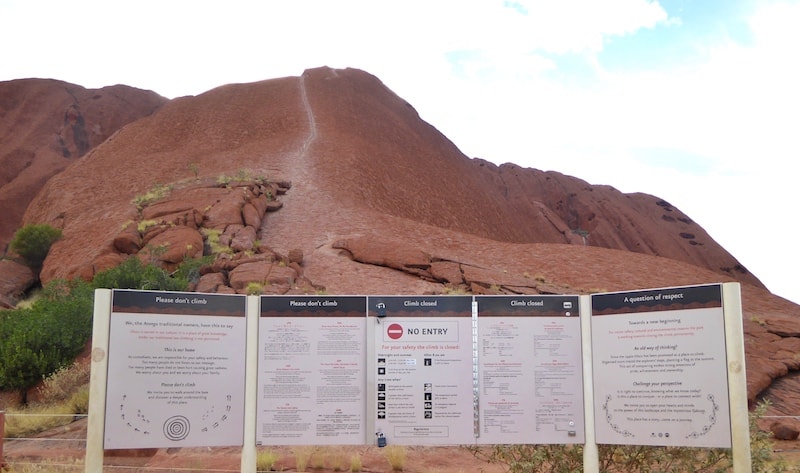
Effective October 26, 2019, the climb was permanently closed. This date marked the 34th anniversary of the Uluru Handback.
3. The wonders of Uluru
One of my biggest surprises was to discover lush green patches in sections around the base.
Another was to see several waterholes containing surface water. What a rich source of food and water for the Aṉangu who’ve occupied these lands for thousands of years.
It must be quite the sight to see water streaming down the sides of Uluru during a decent rain. Streaks of black algae form on the channels that guide the water downwards.
Rainstorms over millions of years have sent water tumbling over the rock, wearing it away to produce grooves, potholes, and plunge pools, often arranged in series.
From a distance, Uluru looks smooth and featureless. Up close and personal, it’s anything but.
There are lots of examples of rock art in shelters around Uluru, creating an important historic and scientific record of human occupation of the region.
Dotted along the path are shelters and water stations. Information panels help visitors learn more about the Aṉangu, and why Uluru is such a sacred place.
There are several benches crafted by Rex Maxwell from trees damaged by Cyclone Tracy that devastated Darwin in 1974. They’re heavy and rugged, yet so inviting.
Logistics and tips
1. How to get to Uluru
I was fortunate. My travel buddy has family in Alice Springs who lent us a vehicle. Driving from Alice Springs was most enjoyable. The distance was just shy of 450 kilometres. I expected the route to be monotonous and boring. It certainly wasn’t. Besides, I was on spotter duty for kangaroos and other wildlife. This, along with the stunning landscape, massive road trains, and isolated roadhouses made it an interesting journey.
Another option is to fly into Ayer’s Rock Airport (also known as Connellan Airport). Sign up for a comprehensive Uluru tour that involves presentations on Aboriginal culture, the base walk, transportation to viewing points, guided hikes in the area, and a visit to the cultural centre.
Tours are also available from Alice Springs. Most of the travellers I met at a hostel in Alice Springs booked a return three-day bus tour package.
2. Accommodation at Uluru
The closest accommodation to Uluru is at Yulara, 18 kilometres from Uluru. Yulara was created in the late 1970s. It moved what had largely become the results of unstructured and unmonitored tourism away from close proximity to Uluru. Yulara consists of tourist accommodation, staff housing, restaurants, a supermarket, gas station, and other essential services. Ayers Rock Resort at Yulara has various types of accommodation. This includes several hotels, apartments, campsites, and hostel dormitories.
3. Uluru-Kata Tjuta National Park
The entry fee for each adult entering the national park is $38 (2021 prices), with the permit valid for three consecutive days. Purchase it online or at the park’s entry station.
Visit the Uluru-Kata Tjuta National Park Cultural Centre as early as possible. The displays describing features of Aṉangu culture and traditions, the Handback, and how the park is jointly managed will broaden the Uluru experience. Take in the free cultural presentations and ranger-guided walks.
4. Spend several days at Uluru
There’s so much to see and do. Spend several leisurely hours at the Uluru-Kata Tjuta National Park Cultural Centre. Take in one of the free cultural presentations. Go as many times as it takes to see the fiery red sunrise and sunset colours that make Uluru special. Book a few tours and excursions. Take advantage of the free cultural performances, films, and talks at the Ayers Rock Resort.
5. Consider hiring a car
Having a vehicle is an advantage. Rentals are available in Alice Springs, Ayers Rock Resort, and Ayers Rock Airport. The drive to and from Alice Springs permitted stopping at roadhouses, experiencing camel and crocodile burgers for the first time, and getting up close and personal with huge road trains. At Uluru, a car offers access to the sunrise and sunset viewing areas without having to rely on a tour, and allows you to explore the national park at your leisure.
6. Book online at Outback Cycling
As of April 2022, bike rental for three hours costs $60 ($45 for children aged 6 to 10). A toddler seat and tag-along for younger children are also available. If you don’t have your own transportation, there’s a Bus ‘n Bike Package from Ayers Rock Resort to Outback Cycling for $109.
Three hours is enough time to cycle the track and incorporate plenty of stops. It wasn’t busy on the day we rented in February 2017, so Lehi suggested we could take our time returning the bikes. Helmets are available, and are included in the rental fee. None of the bikes had water bottle cradles. Some had baskets. In case you score one without a basket, you’ll need a light backpack or some other means to carry water, a camera, sunscreen, and insect repellent.
If you found this post helpful, please share it by selecting one or more social media buttons. Have you cycled around Uluru? If so, do tell, in the comments. Links to articles on the experience are welcome. Thank you.
Care to pin it for later?
This post is neither sponsored nor solicited. I’ve not received any requests, instructions, or rewards from Outback Cycling. I paid the full cost of renting the bicycle to cycle around Uluru.

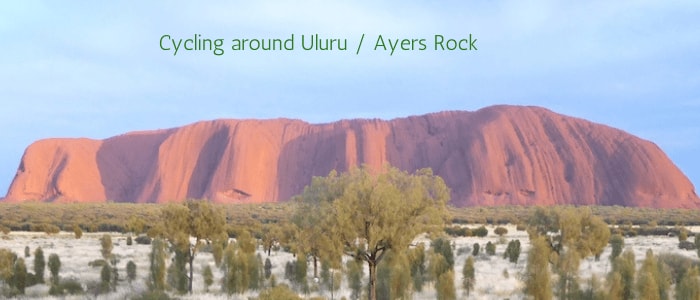
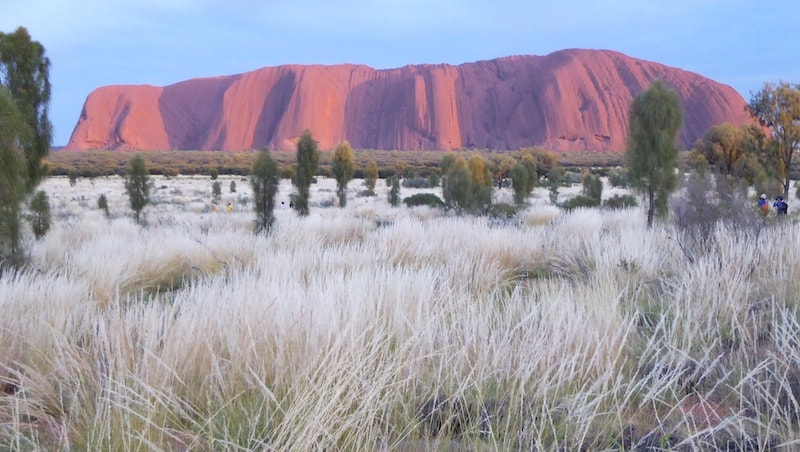
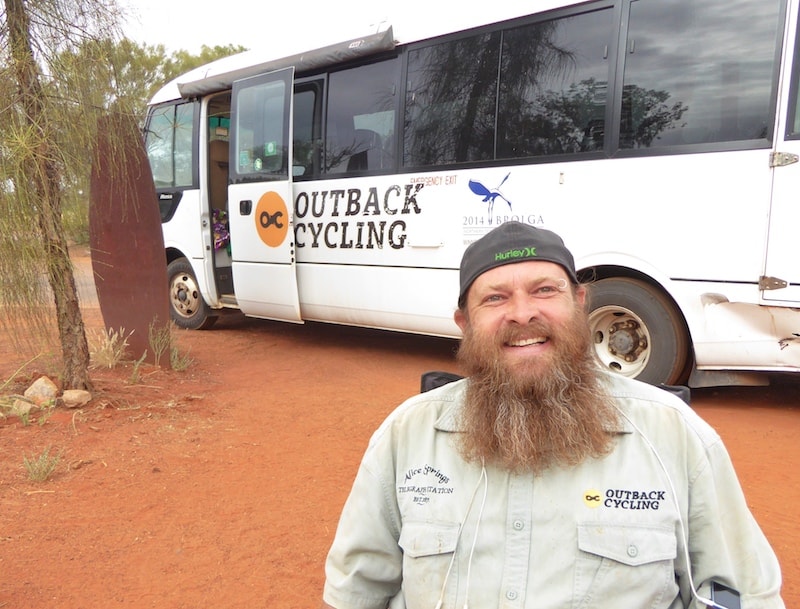
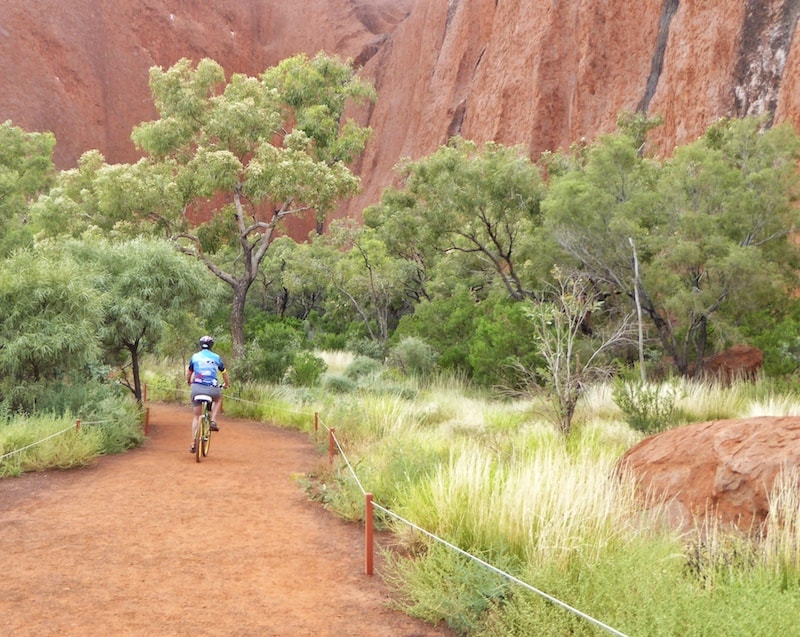
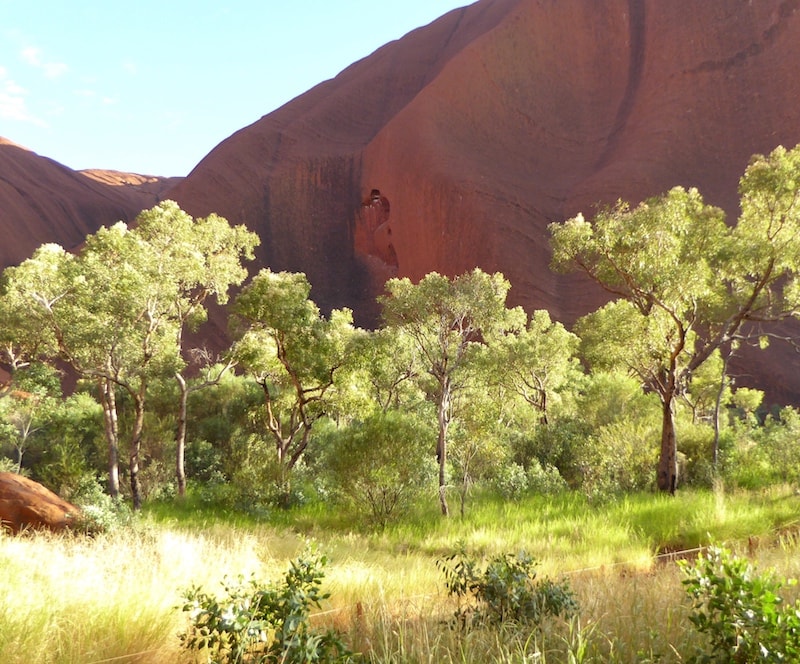
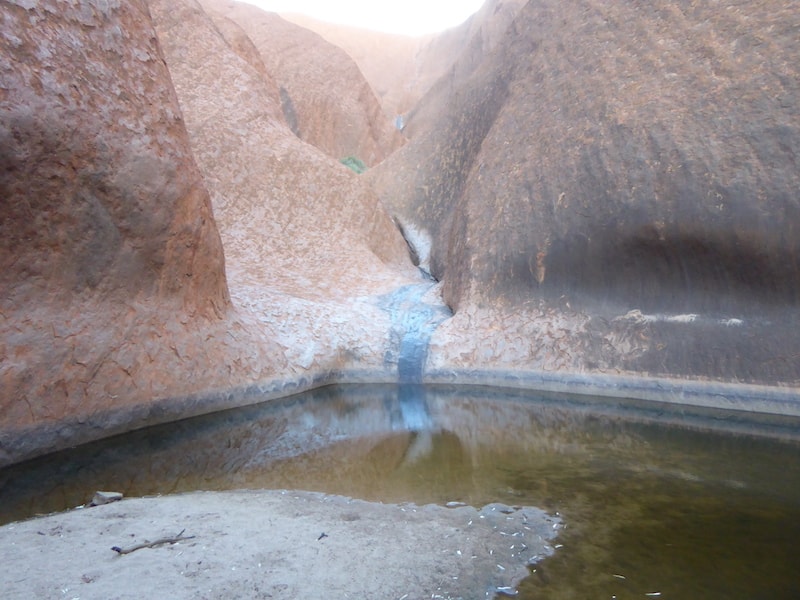
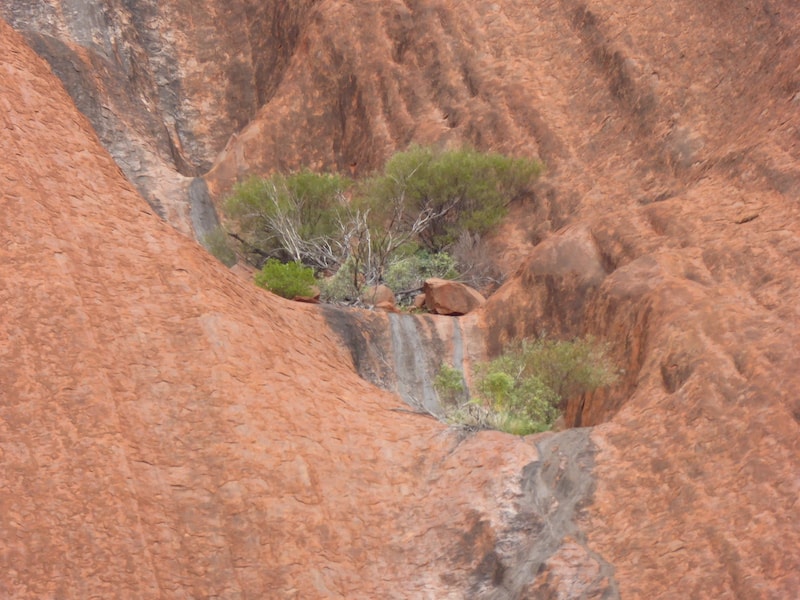

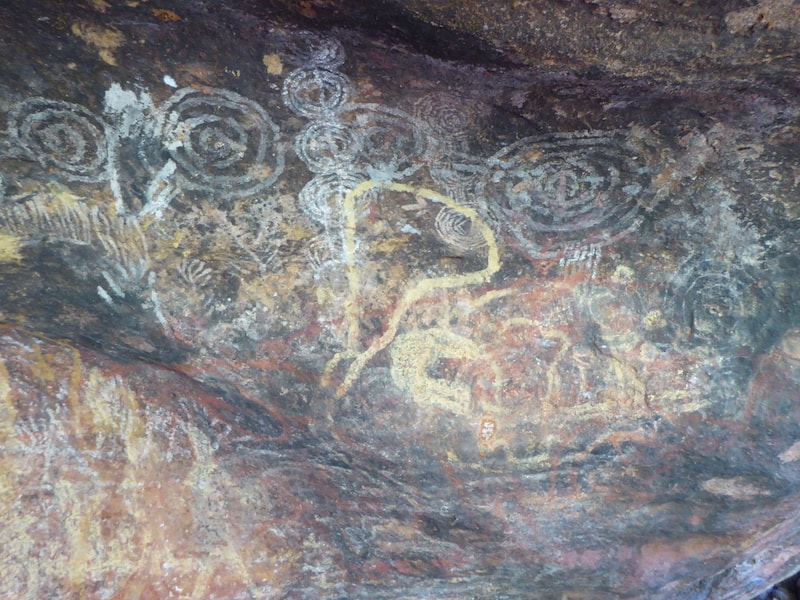
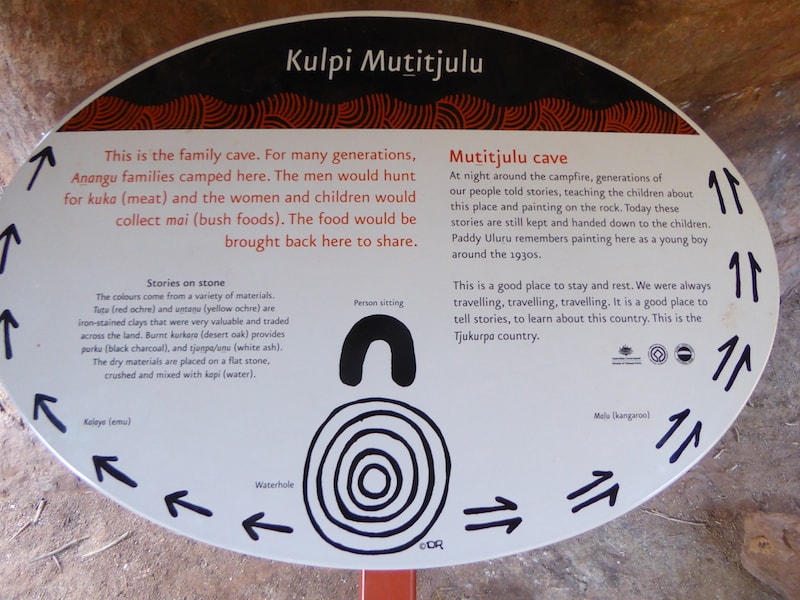
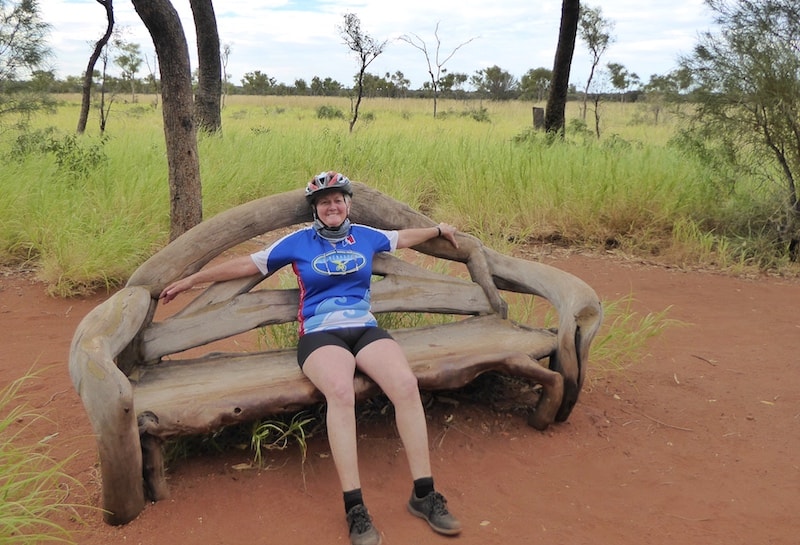
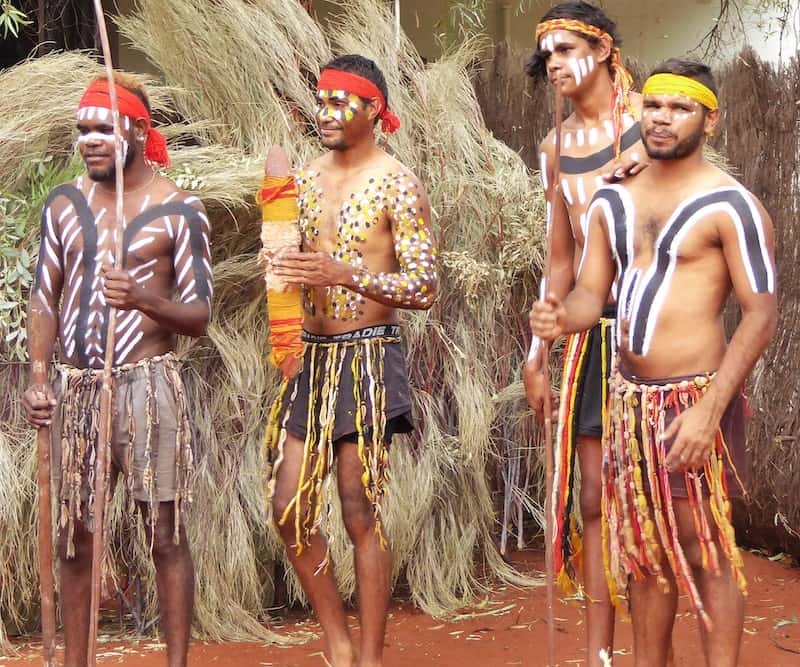
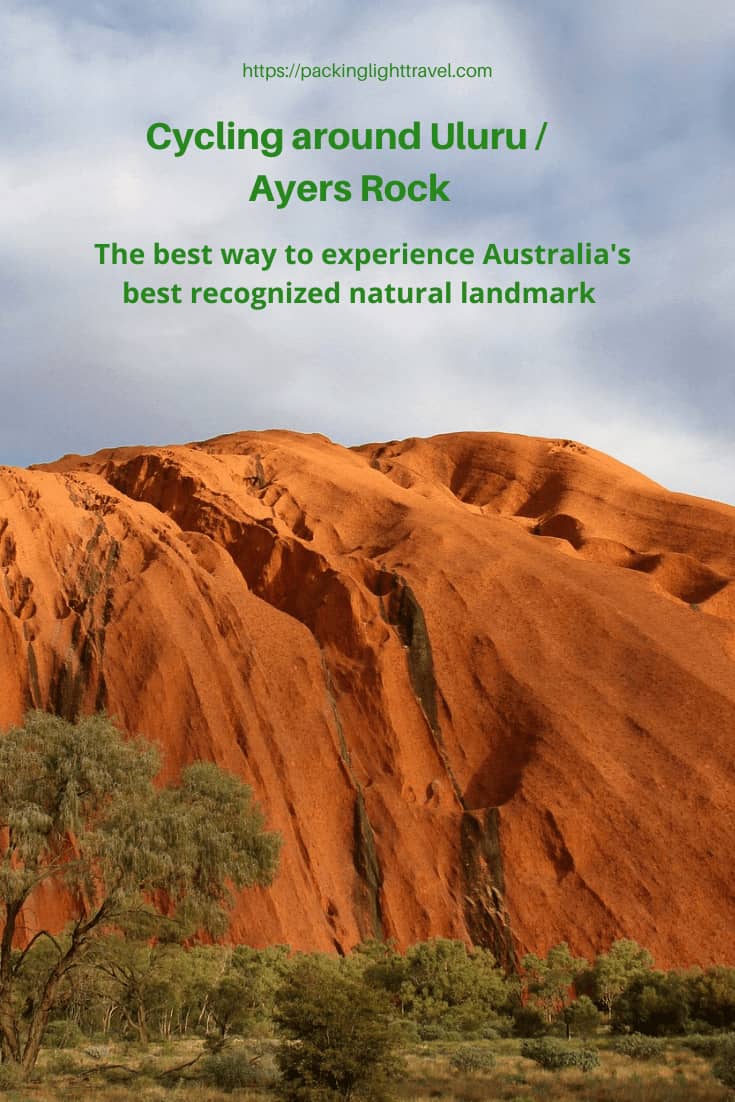




Trackbacks/Pingbacks